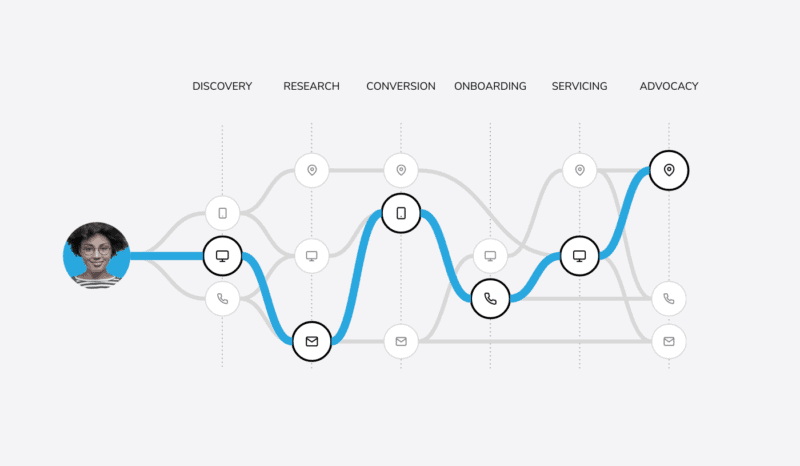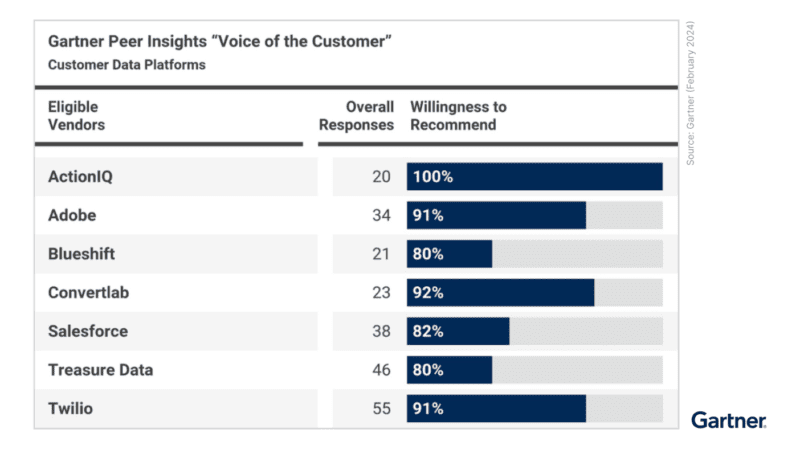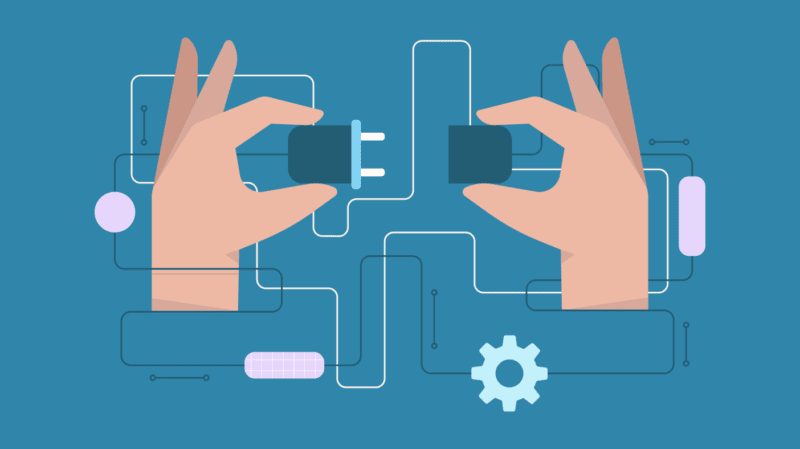How to Boost Customer Loyalty and Retention (and Know the Difference)

New customer acquisition has long been marketers’ bread and butter, but marketing professionals with their eyes on the ROI prize know customer loyalty and retention are just as important.
Customer acquisition costs have been rising faster than customer lifetime value (CLTV) for some time now. In fact, it costs five times as much to acquire a new customer as to retain a repeat buyer. To maximize return on investment, you must double down on the customers you already have. Customer retention is the first step, followed by turning your buyers into brand advocates by growing customer loyalty.
Retention and loyalty are intimately related — after all, you have to retain customers before you can turn them into brand loyalists — but they’re not interchangeable. It’s important to deliver distinct customer experiences tailored to either customer retention or customer loyalty to meet your business goals.

What is Customer Retention?
Simply put, retention marketing is all about hanging on to the customers you have and preventing them from leaving for a competitor. Depending on your business model, this could mean marketing to existing customers in hopes of turning them into repeat buyers or inspiring your customer base to maintain a subscription.
But a customer you merely retain is still at risk. According to a recent study, 32% of consumers will switch brands after just one poor customer experience. Meanwhile, customer expectations keep rising, making customer retention that much more of a challenge.
What is Customer Loyalty?
A loyal customer’s purchasing habits go beyond that of the typical buyer. They expand their relationship by buying more frequently. They make larger purchases or sign up for premium membership plans. They buy products in new categories. Some will even become brand advocates, sharing their positive brand experiences with family, friends and their social networks in addition to writing positive reviews.
Achieving customer loyalty is all about demonstrating what Gartner refers to as value enhancement. In other words, customer interactions with your brand must add value beyond simply purchasing products. This can be done, for example, by delivering customer experiences that make shoppers more confident in their purchase or sharing content that educates shoppers on how to best use a product or service. When brands pull this off, the potential increase in revenue is dramatic. More than 4 in 5 customers (82%) who believe they’ve received value enhancement are likely to buy again from a brand or renew their subscription. In addition, there’s an 86% chance they’ll increase their spending when they return.
Customer Retention Strategies
To retain customers efficiently, you have to understand where they are in the existing customer lifecycle and which ones are at risk of abandoning your brand. With those insights you can appropriately deploy retention-focused experiences.
This is where customer data platforms (CDPs) can help. With a CDP, you can collect and organize customer data, derive powerful insights from customer behaviors and preferences, and then use those insights to orchestrate highly targeted campaigns that help solidify and deepen relationships with your customers.
Retaining First-Time Buyers
With so many choices at their fingertips, first-time buyers are, almost by definition, at risk of churn.
One ActionIQ customer was struggling to turn first-time buyers into repeat shoppers. In response, the brand created a 10-step customer journey that encompassed email, social media and the web. The brand used their CDP to gather information about each consumer, their purchases and their interactions with the brand — including responses to post-purchase messaging. By using this data to personalize the journeys of new customers, the brand increased second-purchase conversion by 30%.
Engaging Inactive Customers
A CDP can easily flag customers who haven’t made a purchase over a certain time period. It can then automatically target them with campaigns designed to drive new purchases.
These campaigns may highlight products that are likely to be relevant based on past purchases or other attributes. Alternatively, you can offer limited-time discounts likely to increase buying urgency. One ActionIQ customer reduced churn by 20% by engaging inactive customers in this way.
Identifying At-Risk Customers
Inevitably, some of your customers will abandon your brand. When they do, you can use lookalike models to understand their attributes and behaviors. This information can help you identify other customers who share these traits so you can take proactive steps to retain them.
Once you’ve identified at-risk customers, you can use your CDP to segment them and quickly deliver highly targeted messages based on their unique interactions with your brand. Using this retention strategy, ActionIQ helped one enterprise brand reduce churn by 10% while increasing customer engagement by 15%.
Personalizing Post-Purchase Journeys
As customer expectations continue to rise, even repeat customers are not immune to churn. Therefore, any time a customer makes a new purchase is also a good time to reach out with a highly personalized post-purchase customer journey. By combining these journeys with welcome messages and abandoned cart reminders, ActionIQ customers have increased repurchase rates by up to 30%.
Customer Loyalty Strategies
While retention is fundamental to any business, in order to maximize CLTV, you must take the next step and build data-driven campaigns that are designed to deepen and broaden customers’ relationships with your brand.
Increasing Upsells and Cross-Sells
Marketers and salespeople have long understood the potential of upselling and cross-selling to grow CLTV. Such campaigns become far more effective when they draw on the full history of your customers’ interactions with your brand in order to deliver personalized messaging (e.g., next-best purchase offers, targeted discounting, etc.).
Research shows that effective upselling alone can increase revenue by 10-30% on average. Likewise, effective cross-selling — such as personalized product recommendations based on past brand interactions — can drive as much as 26% of a brand’s revenue.
A CDP can help you determine which customers are most likely to respond to upsell and cross-sell campaigns via lookalike modeling. Using demographic, purchase and behavioral characteristics to identify similar customers, one ActionIQ customer launched an ongoing campaign targeting likely upsell and cross-sell candidates. As a result, the brand achieved a 40% increase in the number of product categories its customers purchased.
Developing Connected Journeys
Customers expect you to know them and their history with your brand — and they’re much more likely to demonstrate loyalty when you do. A CDP enables you to create customer journeys in which you keep learning from customer interactions with your brand so you can deliver personalized and relevant content across the entire customer lifecycle, from welcome messages to post-purchase communications.
One study found that 82% of customers feel better about a brand that sends them personalized content. By personalizing messages within connected customer journeys and prioritizing customers’ channel preferences, ActionIQ customers have boosted CLTV by up to 25%.
Fueling Loyalty and Rewards Programs
Nearly 60% of consumers report that they purchase monthly from brands when they belong to loyalty programs, while nearly 70% say that a customer loyalty program offering influences buying decisions. As a result, membership in such programs can significantly increase customer loyalty.
The first challenge is to get customers to opt in. To do so, you can use a CDP to develop and operationalize lookalike models to discover customers who have not yet signed up for a program but share key attributes with those who have. As with upsell and cross-sell campaigns, the CDP can then draw on the full history of a customer to personalize invitations to join. And if you have a multi-tiered loyalty program, you can create a campaign that encourages members to move to the next level.
This customer loyalty strategy not only helped one ActionIQ customer increase engagement among program members, it also resulted in a 10% increase in spend velocity across all tiers of its brand loyalty program.
Only by understanding the difference between consumer loyalty and retention can you determine the best ways to increase them. Whether you’re working out how to retain customers efficiently, struggling with measuring customer retention and loyalty or unclear on how to boost customer loyalty for the long term, the answer lies in your customer data. The trick is making sure the data you have is accurate, accessible and actionable.
Empower your brand to boost customer loyalty and retention by providing your business users with valuable customer insights and the tools they need to take action on them with a CDP.
Learn More
Download our 2022 Customer Data Platform Guide to see how CDPs can help you drive customer loyalty and retention or contact our experts for help.





